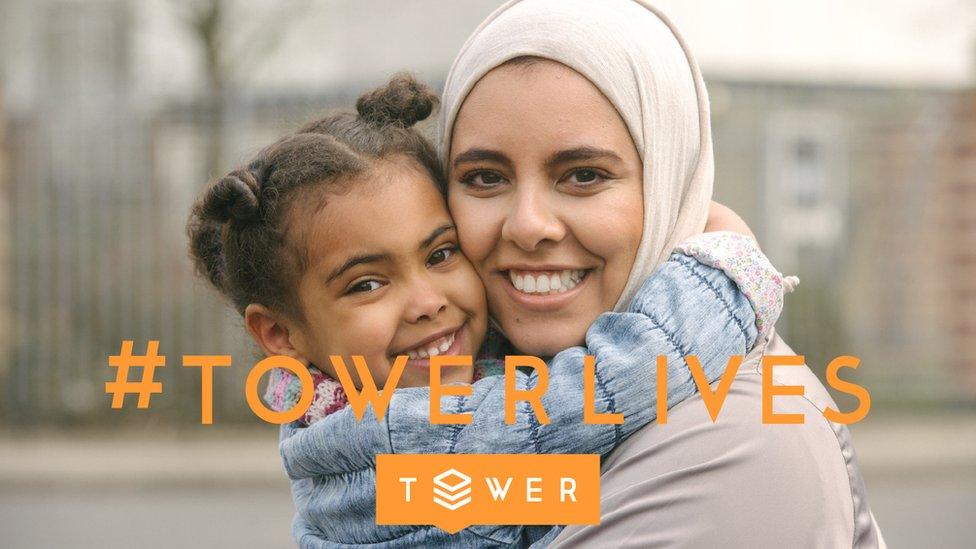#towerlives Haifa Shamsan: High-fashion hijabi
- Published
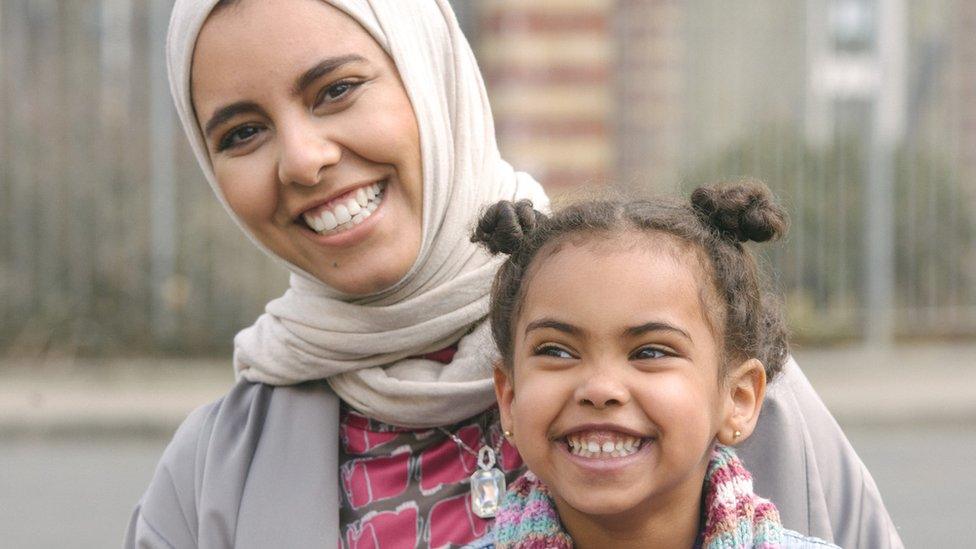
#towerlives is a week-long festival of storytelling and music, on air and on the ground, around the council estate tower blocks of Butetown in Cardiff.
BBC Wales, 1XTRA, Radio 2 and News Online are collaborating all week with documentaries, news reports, features, comedy, spoken word and music.
Haifa Shamsan, who lives in the tower blocks, is part of the rapidly growing Muslim fashion industry and has set her sights on the big time.
Haifa Shamsan is a proud "hijabi"- a Muslim woman who chooses to wear the hijab, or head scarf, as a symbol of modesty and faith.
She is also a fashion designer who believes passionately that religious beliefs do not have to cramp a woman's style.
"I love to wear colours and I feel like being a hijabi and being modest doesn't just mean wearing black," she says.
"Being modest really just means not showing any flesh. You can show your hands, your feet and your face but you can't show your body. Your clothes should be loose-fitting so if you're wearing trousers they can't be too tight and it's better if you have a longer top.
"Basically you need to make sure you are covering everything that might be appealing to a guy."
But within those parameters, anything goes. Patterns, textures, shapes, it is all up for grabs in Haifa's designs.
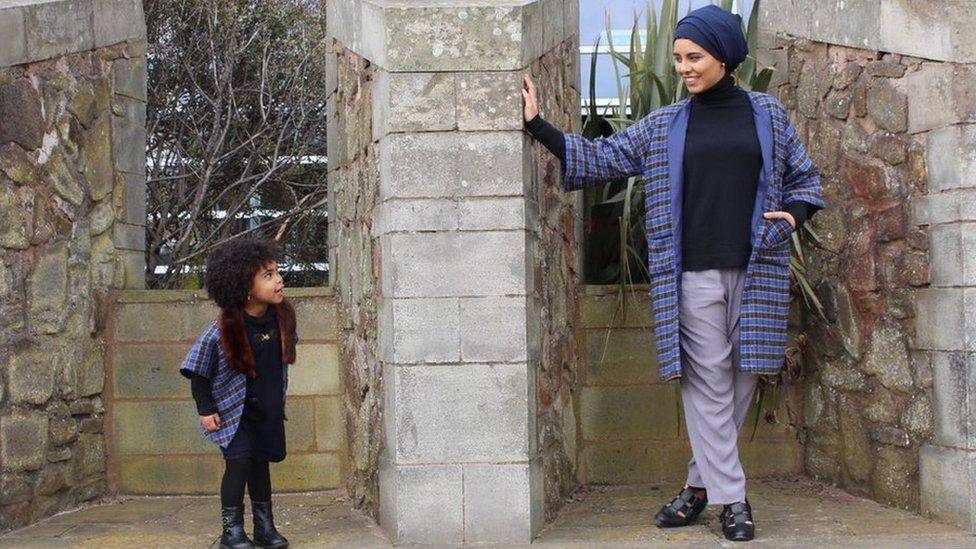
Haifa's label Maysmode is named after her three-year-old daughter, Mays

Haifa says she wants her clothes to appeal to both Muslim and non-Muslim women
"I love to mix vintage and I love to mix heritage pieces," she adds.
"I was brought up in Wales but my family are from Yemen so when I go there, I get fabrics that are really different and that are known to the Yemeni culture. I like to make western styles with them and in that way really mix the two cultures."
Haifa, 27, runs her business - Maysmode - from her flat on the top floor of a tower block in Butetown, Cardiff.
"I started off making clothes for myself because I wanted to be unique in what I wear. People loved my clothes, I started taking part in fashion shows and it went from there.
"Maysmode is known for its single bespoke outfits. Every piece is unique and every piece makes its own statement.
Right now, the label is small but Haifa is thinking big: "I would love to have my own boutique and see my clothes on the high street. I want it to be a massive fashion house - in ten years time, maybe."
The Muslim fashion market is booming. According to the 2015-16 State of the Global Islamic Economy Report, it will be worth £226 billion by 2020 - a projection duly noted by both the big fashion houses and the high street.
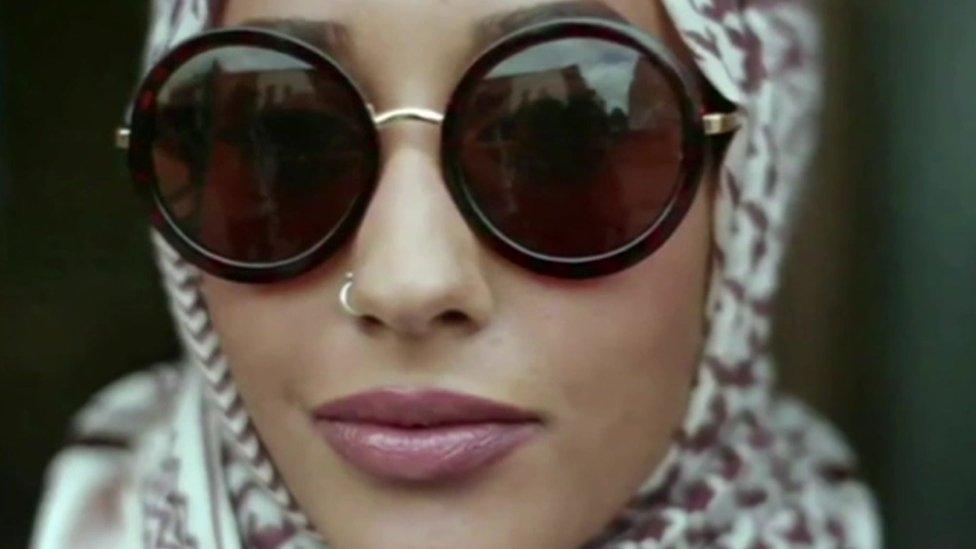
H&M's first hijab-clad model Mariah Idrissi
In January, Dolce & Gabanna joined the likes of Oscar de la Renta and Tommy Hilfiger in launching a modest-wear range.
House of Fraser has started selling sports hijabs, Uniqlo stocks a range by Muslim designer Hana Tajima and last year H&M released an advert featuring a Muslim model in a hijab.
A growing number of hijabi fashionistas also showcase their personal style on Instagram and YouTube, often racking up hundreds of thousands of followers and views - a far cry from the stereotype of Muslim women as repressed figures, unable to express themselves through the way they look.
"I think it's great because they are spreading positivity to non-Muslims," says Haifa. "They show how we are and how we do things and that we like to be fashionable and take care of how we look.
"This generation has not only had it difficult with being pre-judged but also having to prove to others what we are really like and I guess it's why so many of us have taken on a big role in modest fashion.
"To us hijabis, I feel we make more of an effort to be well-dressed and trendy, so that we aren't stereotyped."
- Published30 September 2015
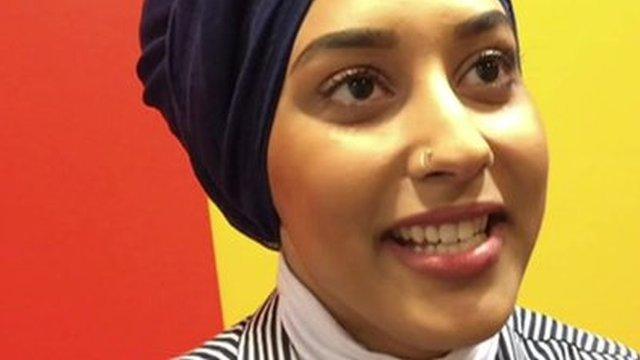
- Published15 April 2016
